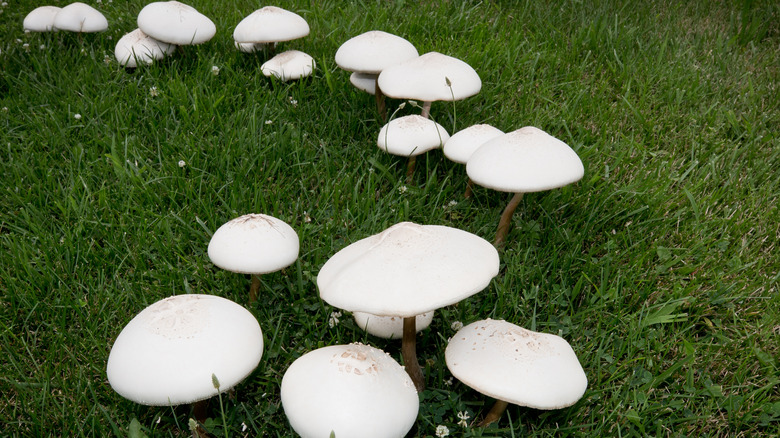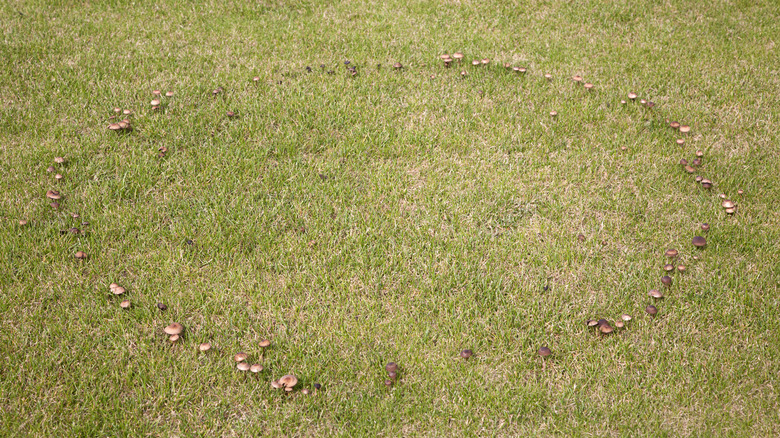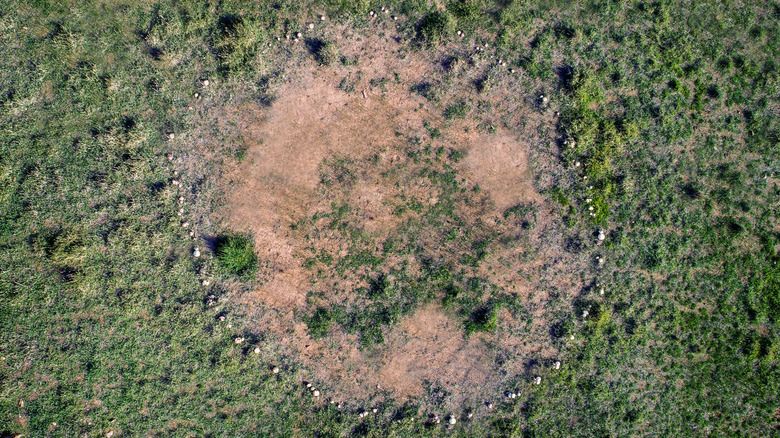What Is A Fairy Ring & Is It Safe To Have One In Your Yard?
You might step out into your yard one morning to discover a nearly perfect circle of mushrooms or a ring of unusually dark and lush grass. These mysterious formations are known as fairy rings, but their existence isn't a result of dancing sprites. Instead, they form when a specific fungus is active in the soil, most often feeding on buried organic material like an old tree stump or decaying roots. It's worth noting that household items like baking soda won't get rid of fairy rings, so dealing with them often requires a more specific solution.
While fairy rings are typically considered to be a cosmetic issue for most lawns, they can occasionally be a sign of a more serious problem. The ring's appearance and the health of the grass around it can tell you a lot about the fungus' effect. The good news is that these rings are usually harmless, but there are instances where they can do real damage. Understanding the difference will help you know whether your lawn requires maintenance or if you can simply let the ring run its course.
How fairy rings form and grow
The science behind fairy rings is a process that's all about fungi, and the ring itself is a visible sign that fungus is present and expanding outwards from a central point. One of the most common types is Marasmius oreades, also known as the fairy ring mushroom. The fungus lives primarily underground as a network of thread-like filaments called mycelium. Its life cycle begins by feeding on a decaying food source like a dead root system, a buried tree stump, and even construction debris. From this central point, the mycelium grows in all directions at a consistent rate. As it expands, it secretes digestive enzymes that break down the organic matter in the soil, releasing nutrients.
This process can lead to three types of fairy rings. A Type 1 fairy ring happens when the mycelium repels water, causing the grass above it to dry out and die. In a Type 2 ring, this same process creates a concentrated band of nitrogen and other fertilizers at the edge of the ring. This boost of nutrients makes the grass above it grow taller, denser, and a deeper green; much like the mushrooms growing in your flower beds, this could actually make the surrounding grass healthier. The mushrooms you might see are the fruit of the fungus, appearing after rainfall or in humid conditions as the fungus reproduces. This is referred to as a Type 3 fairy ring, and these mushrooms often only last for a short period before disappearing again.
When a fairy ring is a problem
If you're wondering what mushrooms in your yard say about your lawn's health, a fairy ring can be a clear answer. While many fairy rings are considered harmless and are just part of a yard's natural ecosystem, there are certain times when they can become a serious issue. The most destructive kind is the Type 1 fairy ring. This happens when the fungal mycelium beneath the soil becomes so dense that it makes the ground hydrophobic, meaning it fails to absorb water. This is noticeable during dry spells, since the soil inside the ring is starved of moisture, leading to a dry area. The grass in the affected space will turn brown, wither, and die. The dead ring of grass then becomes a bare patch that can be difficult to revive.
A good place to start with fairy rings is to simply wait for them to disappear on their own. However, if you want a more hands-on approach, try core aeration to prevent thatch from thickening, which can impact the health of your grass and make it more vulnerable to fairy rings. For a Type 2 fairy ring, you can apply a nitrogen fertilizer to the rest of your lawn to help the color match.
In addition to the possible damage caused by fungi, mushrooms that often emerge from a Type 3 ring can pose a risk. While they may add whimsical charm to your lawn and are even considered edible, several types of mushrooms that look similar to Marasmius oreades are actually poisonous. It's best to wear gloves when removing and disposing of any mushrooms you see and keep a close eye on pets and small children in the yard.


